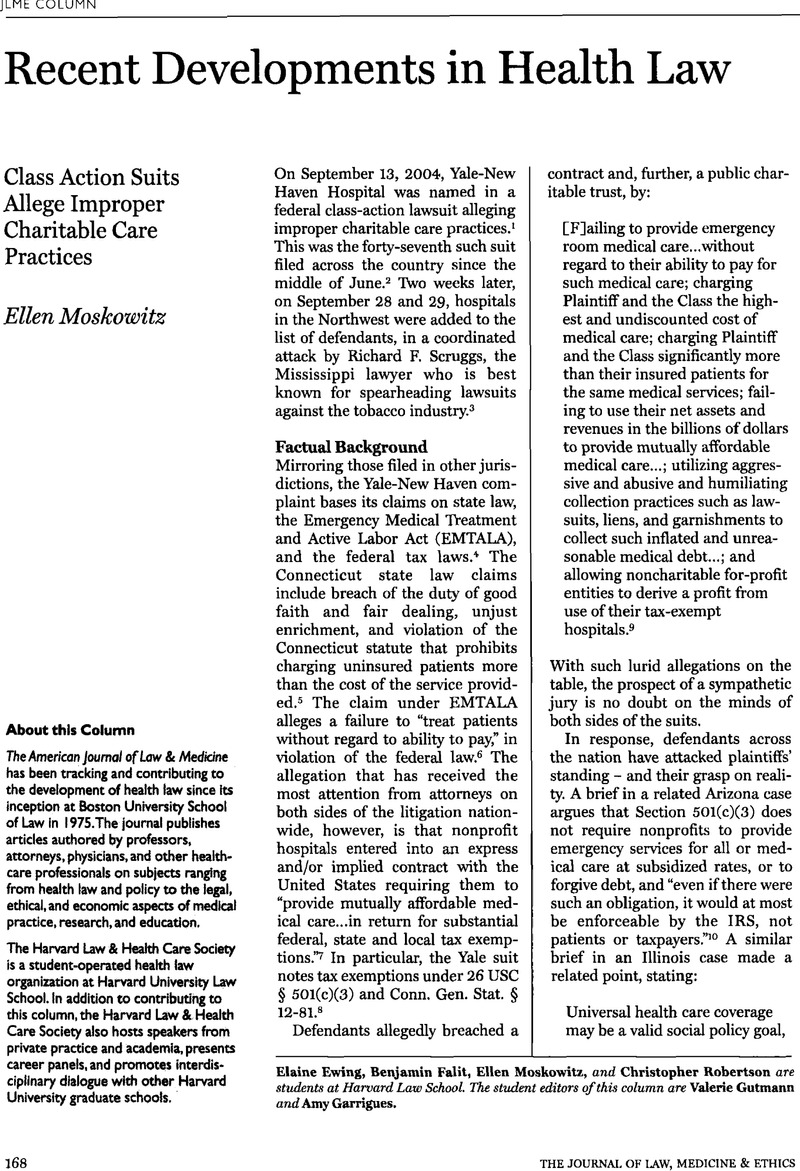See
Nagle, M. E., “State ‘Fraud’ Suits Over Clinical Trial Results Tread on Free Speech Rights,”
Mealey's Litigation Report: Antidepressant Drugs, September 24,
2004;
Abramson, J.,
Overdosed America (
New York:
HarperCollins, 2004): At 104–105 (Discussing the Controlled Onset Verapamil Investigation of Cardiovascular End Points (CONVINCE) study, a five-year study sponsored by Pharmacia that was stopped two years early because the results up to that point demonstrated that Pharmacia's more expensive blood pressure medication Covera was slightly less effective at preventing the complications of high blood pressure than less expensive drugs;
see Psaty, B. M. and
Rennie, D., “Stopping Medical Research to Save Money: A Broken Pact with Researchers and Patients,”
JAMA 289, no. 16 (2003) 2128–2131). Critics might argue that in virtually all trials, the investigators, sponsors and patients are all blinded to the treatment each participant receives, and thus it is impossible for pharmaceutical companies to know in advance whether or not a study is likely to produce negative results. In such double-blind studies, Data and Safety Monitoring Boards (DSMBs) are responsible for monitoring interim results in order to protect patients' welfare. Although employees of the trial's sponsor are not permitted to serve as members of DSMBs, they are allowed to assist the DSMB in its evaluation of clinical data. Moreover, voting members of DSMBs are permitted to have limited financial ties to the sponsor, and non-voting members are allowed even greater financial connections to the company funding the trial. See Principles on Conduct of Clinical Trials and Communication of Clinical Trial Results,
at <
http://www.phrma.org/publications/publications//2004-06-30.1035.pdf>. With such poor boundaries between DSMBs and sponsors, it seems likely that decisions to prematurely terminate clinical trials are often based at least in part on a study's potential for generating adverse data. Requiring pharmaceutical companies to submit data from all unfinished (as well as completed) trials in order to achieve FDA approval would not adequately deter the premature termination of projects that are likely to produce negative results. Under the current regime, FDA approval is granted on an all-or-nothing basis and thus public disclosure of a study with negative results could hurt market share, even though the results are not sufficiently damning to foreclose FDA approval. Under a system in which the FDA rates drugs in addition to approving them (see
infra), however, such a mandate may sufficiently deter the premature termination of studies conducted prior to the product's launch. In order to prevent the inappropriate abortion of post-launch studies, the government would have to either (a) require all companies to publicly disclose the termination of trials, along with the rationale for each decision (see
infra), or (b) regularly adjust the “ratings” of previously launched products according to all available data (both completed and unfinished trials).
Google Scholar